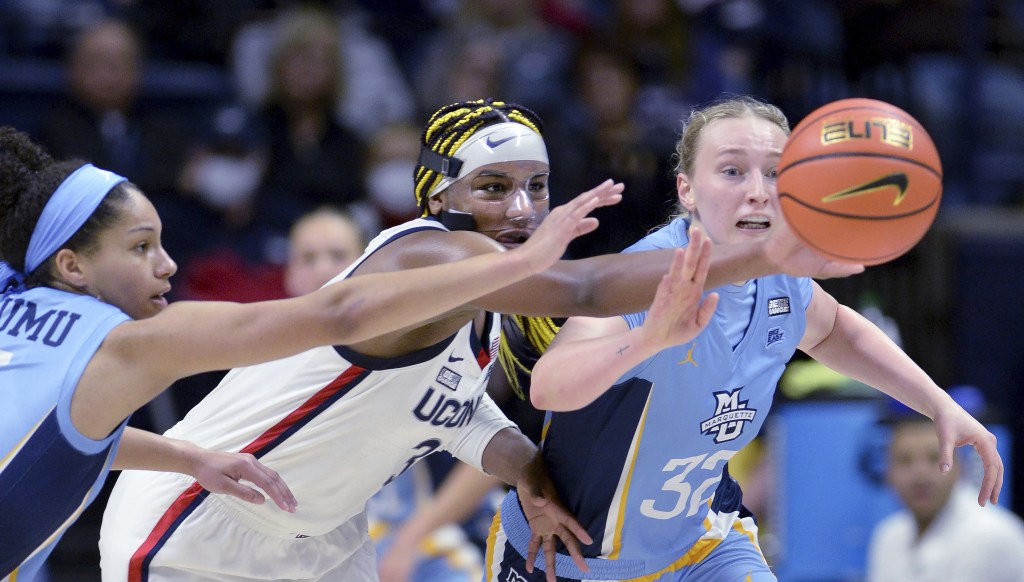So you take the only two losses that UCONN has and use it.
I and lwrcasefaN were communicating about the effect of the number of turnovers relative to the opponents' number of turnovers. UCONN has two losses
So you take the only two losses that UCONN has and use it.
I and lwrcasefaN were communicating about the effect of the number of turnovers relative to the opponents' number of turnovers. UCONN has two losses. In my opinion turnovers lost the game to Maryland (5 vs, 22). Maryland averages 1 point per an opponent's turnover. So if UCONN had 14 or fewer turnovers against the Terps, it is conceivable UCONN wins. Not to mention the points UCONN probably would have scored not having turned the ball over. I believe most of UCONN's turnovers are the result of ill conceived passes with a very high risk/reward ratio. So this example agreed with lwrcasefaN's “
Sometimes it hurts them.”
UCONN had a large number of turnovers (15) against Notre Dame who had more turnovers (18). If UCONN had fewer turnovers the outcome would have still been a loss with a smaller MOV. In this case the extra three turnovers did not impair ND's effort. ND on that day was the better team excuses and rationalizations aside. So this example agreed with lwrcasefaN's “
and sometimes it doesn't.”
This relaxing herbal tea starts with a blend of chamomile, spearmint and other soothing herbs with valerian for an especially calming cup.

 View attachment 82607
View attachment 82607
Well, any game, win or lose can be analyzed statistically, and IFs applied to the final score. I would submit the biggest factors in the loss to Maryland was no Muhl and Lopez- Senechal early foul trouble, limiting her to only 8 shots in the game. I am sure the Uconn plan was not to have Bettencourt play one more minute than Lopez-Senechal.
Looking deeper, Uconn was outscored by 11 in the 2nd quarter, won the other 3 quarters combined by 4; Uconn had 5 TOs in the 2nd qtr and 16 (an average of 5 per qtr) in the other 3. So did the 5 TOs play a deciding role in the 2nd qtr, but not in the other 3? Do TOs hurt a teams chances to win? Of course they do but so do a ton of other factors; rebounding, who’s hurt, who has an off day shooting, who gets in foul trouble, etc. etc. Looking at any one stat in any one game in a vacuum usually reveals very little of substance, not always, but usually. I would respectfully submit that is the case in the Maryland loss.

 www.courant.com
www.courant.com




